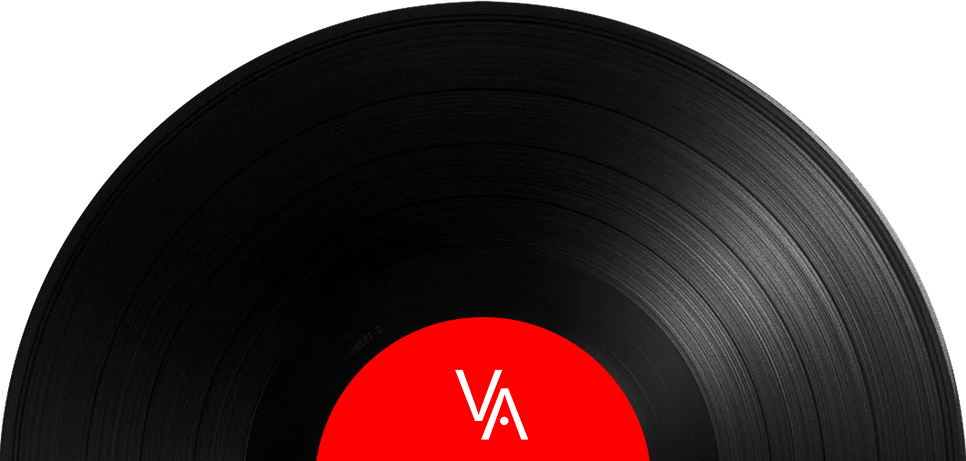

For Ladies Only, the sixth album by Steppenwolf, hit store shelves in November, 1971. It's something of a concept album about feminism - I think - but it also contains more conventional and less politically polarizing songs about love and relationships (like any good rock and roll record). A smattering of critics thought the album to be sexist, citing some of the lyrics and the photo of a car that looks like a penis on the inside of the gatefold cover.
The title track, clocking in at over nine minutes, is very much of its time but it's also timeless. I got lost listening to it and wanted it to go on and on. The album also spit out two singles that just missed the Top 40.
Guitarist Kent Henry, from the band Blues Image, had replaced original guitarist Larry Byrom prior to the recording of this album, and this record would be the band's last slab of new material prior to the first of several breakups in 1972. They would reunite two years later for a tour, but they would never again see the heights of their previous success.
Mars Bonfire, who wrote Born To Be Wild, penned another song, Ride With Me, that was released in the summer ahead of this record, so fans were in an expectant mood by the time the record came along. A truncated version of the title track was the first single to come off the album after its release, and it climbed ahead of The Who's Behind Blue Eyes in the charts - not an insignificant achievement. Born To Be Wild appeared in the 1969 Peter Fonda movie Easy Rider and, perhaps unfortunately, forever after saddled the band with a biker image they didn't want and were never able to fully shake off.
Steppenwolf became a big deal due to their hard-driving and aggressive sound and also John Kay’s stone-road gritty vocals. This album is much more mellow than its predecessor, and even employs a six-minute piano solo in the middle of the title track. It's definitely a departure from the sound that made them famous, and while some fans and critics were disappointed I was very much intrigued. To my ears, the group was trying - successfully, in my opinion - to reach beyond the immediate horizon and explore new stylings and musical ideas. That kind of thing happened a lot in the 60s, and the music was all the better for it.
Ride With Me is a nod to their biker image, but listening to the rest of the record it's easy to see the band is more interested in getting out from behind that, which I'd be willing to bet they thought of as a limitation being imposed on them. But it also reeks of money-making commercial potential, so it's hard to believe it didn't shoot up the charts like Born To Be Wild did a couple of years earlier.
The photograph on the gatefold's inside - well, it's funny as hell if you get the joke. A spiffy little roadster parked outside Grauman’s Chinese Theatre with a small crowd gathered around it. The car looks like an erect penis, which is absolutely hilarious (or maddening, depending ot your point of view) when you realize this is an album that's supposedly conceptually linked to feminism. Beside the car stands a cop who looks to be writing a ticket. I wonder what the citation reads.
This record can be had for almost nothing in almost any used record store. The problem is it's almost always in terrible shape. I don't know how many copies I brought home before I found one in half decent condition that didn't have too many snap, crackle and pops on it. This is a record that went to parties, and my VPI cleaning machine had to brush its teeth after cleaning it.
Still, a very good record!
UPDATE: I have now cleaned this record with my iSonic ultrasonic record cleaning machine and the results are stunning! Sounds glorious! That machine takes a lot of the worry off of buying old, used records.
For Ladies Only, the sixth album by Steppenwolf, hit store shelves in November, 1971. It's something of a concept album about feminism - I think - but it also contains more conventional and less politically polarizing songs about love and relationships (like any good rock and roll record). A smattering of critics thought the album to be sexist, citing some of the lyrics and the photo of a car that looks like a penis on the inside of the gatefold cover.
The title track, clocking in at over nine minutes, is very much of its time but it's also timeless. I got lost listening to it and wanted it to go on and on. The album also spit out two singles that just missed the Top 40.
Guitarist Kent Henry, from the band Blues Image, had replaced original guitarist Larry Byrom prior to the recording of this album, and this record would be the band's last slab of new material prior to the first of several breakups in 1972. They would reunite two years later for a tour, but they would never again see the heights of their previous success.
Mars Bonfire, who wrote Born To Be Wild, penned another song, Ride With Me, that was released in the summer ahead of this record, so fans were in an expectant mood by the time the record came along. A truncated version of the title track was the first single to come off the album after its release, and it climbed ahead of The Who's Behind Blue Eyes in the charts - not an insignificant achievement. Born To Be Wild appeared in the 1969 Peter Fonda movie Easy Rider and, perhaps unfortunately, forever after saddled the band with a biker image they didn't want and were never able to fully shake off.
Steppenwolf became a big deal due to their hard-driving and aggressive sound and also John Kay’s stone-road gritty vocals. This album is much more mellow than its predecessor, and even employs a six-minute piano solo in the middle of the title track. It's definitely a departure from the sound that made them famous, and while some fans and critics were disappointed I was very much intrigued. To my ears, the group was trying - successfully, in my opinion - to reach beyond the immediate horizon and explore new stylings and musical ideas. That kind of thing happened a lot in the 60s, and the music was all the better for it.
Ride With Me is a nod to their biker image, but listening to the rest of the record it's easy to see the band is more interested in getting out from behind that, which I'd be willing to bet they thought of as a limitation being imposed on them. But it also reeks of money-making commercial potential, so it's hard to believe it didn't shoot up the charts like Born To Be Wild did a couple of years earlier.
The photograph on the gatefold's inside - well, it's funny as hell if you get the joke. A spiffy little roadster parked outside Grauman’s Chinese Theatre with a small crowd gathered around it. The car looks like an erect penis, which is absolutely hilarious (or maddening, depending ot your point of view) when you realize this is an album that's supposedly conceptually linked to feminism. Beside the car stands a cop who looks to be writing a ticket. I wonder what the citation reads.
This record can be had for almost nothing in almost any used record store. The problem is it's almost always in terrible shape. I don't know how many copies I brought home before I found one in half decent condition that didn't have too many snap, crackle and pops on it. This is a record that went to parties, and my VPI cleaning machine had to brush its teeth after cleaning it.
Still, a very good record!
UPDATE: I have now cleaned this record with my iSonic ultrasonic record cleaning machine and the results are stunning! Sounds glorious! That machine takes a lot of the worry off of buying old, used records.


